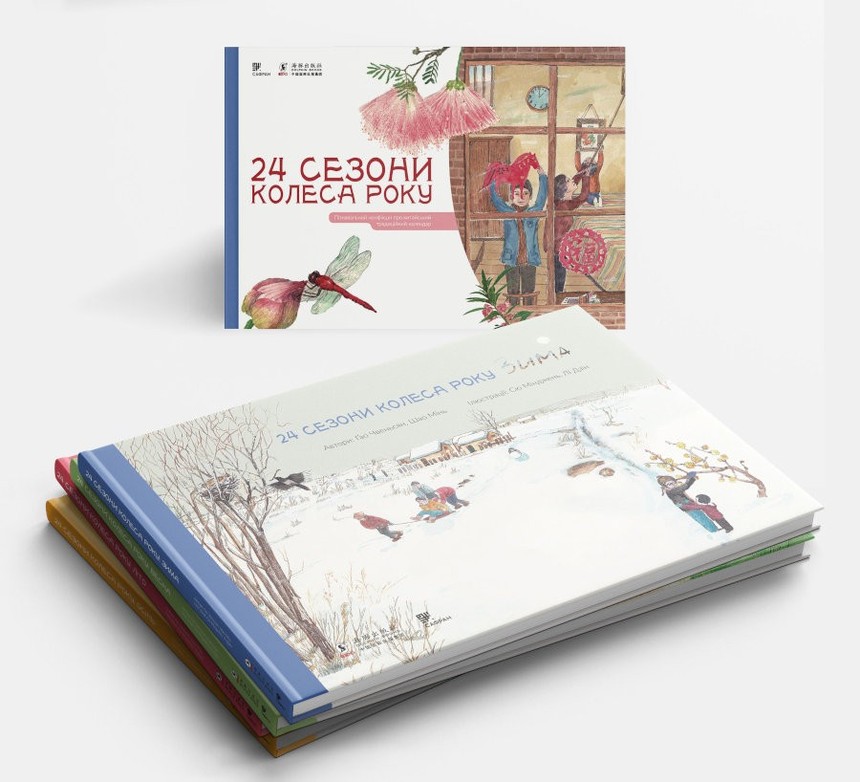
The reader is introduced to this calendar along with Yaya, a Chinese girl who is the little hero of the book series. She receives such a calendar for her sixth birthday, and during the following four seasons, divided by the Chinese tradition into 24 seasons, she observes the changes in nature and the lives of people.
The traditional Chinese calendar is also called the agricultural calendar, which is a combination of the lunar and solar calendars. On one hand, according to this calendar, the beginning of the year moves to the beginning of spring, which corresponds to the young moon in late January - early February. Each month of this calendar begins with the new moon, and on the 15th of each month, the full moon inevitably appears in the sky. On the other hand, the solar calendar divides the year into 24 agricultural mini-seasons based on the position of the Sun relative to Earth. Four seasons are entirely sufficient for city dwellers, but not enough for farmers who want to know exactly when the last frosts will come and when it's time to sow the grain. The needs of the latter led to the emergence of such a calendar in ancient China.
The publication «24 Solar Terms» provides detailed information about each of these and other seasons, when each of them begins, how the weather changes, what happens to plants, how animals behave during this time, and what people do during this period. Thus, we learn that the Beginning of Spring falls on February 3, 4, or 5. Then the ice begins to melt from the eastern wind, light-yellow petals of winter jasmine peek through dark corners, animals wake up from hibernation and head in search of daily food, and fish swim upward to the frozen surface of the water bodies, craving more oxygen for breathing after a long stay in the cold motionlessness. For people, this season is primarily associated with the most important holiday of the year - the Spring Festival, which falls on the first day of the first month of the lunar calendar.
Thus, throughout all four seasons, along with Yaya, the reader learns many interesting things about traditional Chinese culture, beliefs, traditions, and habits of modern Chinese. For example, on the Spring Equinox, the Chinese try to stand an egg on its blunt end because on this day the sun shines directly on the equator, so the influence of the sun's gravity on the northern and southern hemispheres is equal, and therefore the egg should stand upright and not fall. On the Beginning of Summer holiday, eggs are boiled and hung around children's necks. According to legend, this is to prevent excessive fatigue and exhaustion from the heat. The reader is then offered instructions on how to make a pouch to store such an egg. Later, one can find an explanation of how to make a lotus-shaped lantern for the Hungry Ghost Festival during the autumn season of Falling Heat. In China, it was believed that the lanterns would bring news to the deceased family members.
Thanks to the combination of interesting information, vivid illustrations, and unexpected curiosities, «24 Solar Terms» can be engaging for both adults and children. This was confirmed in a comment about the book by one of the readers, an expert in Montessori pedagogy, Olga Yelshanska, who bought the book for her daughter: «I am very careful about choosing books for my daughter and love buying them. It seems that her 'children's' library will soon outgrow our 'adult' one. But, to be honest, I adore reading her books myself! '24 Solar Terms' is a beautiful publication containing many interesting facts that were not available during my childhood. These books can be looked at for hours. They are interactive and can be played with, read, and used to prepare for a trip (since borders will eventually open, and planes will fly again, right?). Every time we open one of the books in the series, we find something we didn't notice the last time.
For me, as a teacher, these books have another great value: '24 Solar Terms' is an opportunity to immerse oneself in Chinese culture. The seasonality of the books allows for a comprehensive understanding of nature, people, and traditions. It is hard to imagine a more interesting and child-friendly textbook».
By Oleksandr Nykolyshyn